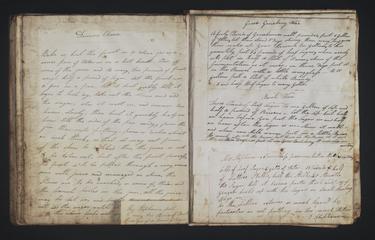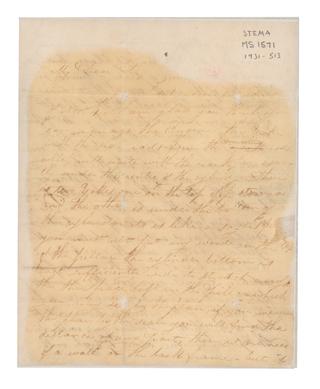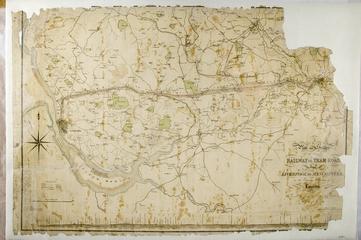
Stephenson, George 1781 - 1848
- Nationality:
- English
George Stephenson (1781–1848), colliery and railway engineer, was born at Wylam, Northumberland, on 9 June 1781. He is often credited as being the ‘Father of Railways.’ He was the second son of Robert Stephenson, foreman at the Wylam colliery pumping engine. At fourteen he was appointed an assistant fireman to his father and when he was seventeen Robert Hawthorne employed him in the position of ‘plugman’, or engineman. Robert worked on engines at Willington Quay, Killingworth and Montrose, Scotland, before returning to Killingworth, where in 1812 he was appointed engineman and given responsibility for all the machinery at a number of collieries in the Newcastle area.
Stephenson built his first locomotive, Blucher, in 1814 for Killingworth colliery, and in 1816, he patented the ‘steam spring’ with William Losh, of Walker Ironworks, Newcastle. Losh had previously supported Stephenson’s claim that he invented the first safety lamp for underground mineworkers in 1815. In early 1822, George was appointed engineer to the Stockton and Darlington Railway, after submitting survey plans and cost estimates for the proposed line and in
May 1823, the company was given permission to use steam locomotives on the line.
On 23 June 1823, George Stephenson established the engine manufacturing company Robert Stephenson & Co. with Edward Pease, Thomas Richardson and Michael Longridge, which was to be managed by George’s son, Robert. Work commenced in August 1823 and by the time the Stockton and Darlington line opened for traffic on 27 September 1825, four winding engines had been delivered together with a operational steam locomotive: Locomotion No.1.
In 1824, George was employed to undertake surveys and prepare plans for the proposed Liverpool and Manchester Railway, but the bill was rejected in parliament. A new bill was passed in 1826, and Stephenson was appointed engineer. Stephenson fought strenuously for using locomotive power on the line, and his locomotive Rocket, built under the direction of his son Robert, won the Rainhill locomotive trials, held in October 1829, to determine the best means of propulsion on the Liverpool and Manchester line.
Stephenson was chief engineer to the Grand Junction line connecting Birmingham with Liverpool and Manchester, begun in 1833 and he was also chief engineer to the following railways: Manchester to Leeds, Birmingham to Derby, Normanton to York, and Sheffield to Rotherham, and others, all begun in 1836. The Derby to Leeds Railway (afterwards called the North Midland line) was commenced under his supervision in 1837.
In 1838 Stephenson was elected vice-president of the mechanical science section of the British Association at its Newcastle meeting.
In 1845, Stephenson’s party won a parliamentary battle as supporters of the locomotive against the upholders of the atmospheric railway system, led by I.K. Brunel. In 1847 Stephenson became president of the Institution of Mechanical
Engineers, which was founded by him that year in Birmingham. He received in 1835 the honour of knighthood from Leopold I of Belgium and in 1845 he also visited northern Spain in connection with a proposed railway. Stephenson consistently refused all proffered honours in England, however, declining a knighthood on two occasions.
He died of pleurisy at Tapton House, Tapton, near Chesterfield, on 12 August 1848. He was buried on 17 August at Holy Trinity Church, Chesterfield.



